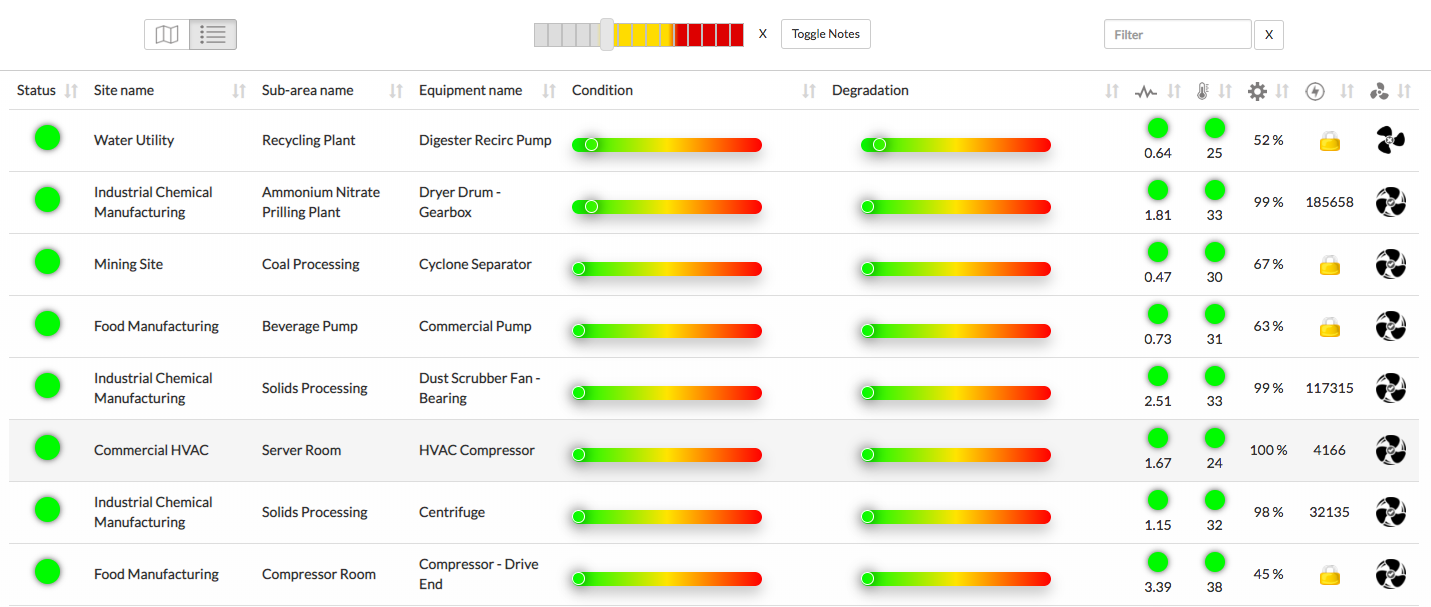Many maintenance staff in process industries have stressful jobs. They must constantly seek to balance the opposing requirements of maximising production and machinery up-time, whilst simultaneously minimising unplanned downtime with its associated loss of production, generally within a fixed maintenance budget. Traditionally this has involved, as a minimum, a scheduled maintenance plan for all machines that directly affect production if they fail, or need to be stopped for scheduled maintenance.
Downtime for scheduled maintenance can obviously be minimised by scheduling simultaneous maintenance on as many machines as possible, and the impact of this downtime on production can be minimised by choosing a maintenance window which coincides with a period when lost production has the least impact. But the optimum maintenance window might be outside ‘normal’ operating hours of the maintenance staff, putting pressure on the maintenance budget.
The above of course assumes that maintenance staff are using ‘traditional’ maintenance regimes such a mix of ‘run to fail’ and ‘scheduled maintenance’. The ‘run to fail’ (or reactive maintenance) regime is widely used on simple low powered or non-critical machines, the failure of which does not directly affect production. The ‘scheduled maintenance’ (or preventive maintenance) regime is also widely used on more complex larger machines where failure can affect production.
However, research1 has shown that routine maintenance on some types of machine can actually reduce the reliability of the machine rather than improving it, throwing into question the assumption that routine maintenance should be used when reliability is important.
24×7 Remote Monitoring
Another maintenance regime that may be more appropriate in a process industry is ‘condition-based maintenance’ (CBM), where the ‘health’ of machines is continuously monitored 24×7, and maintenance only performed when the ‘health’ or ‘condition’ of a machine indicates that maintenance is actually necessary because of measurable degradation in one or more machine condition indicators such as increased vibration, noise or temperature.
Some maintenance managers have been reluctant to adopt CBM because of perceived disadvantages such as cost, complexity, etc. This was certainly true of traditional CBM approaches such as SCADA systems which are complex and relatively expensive to buy and install, and often require skilled staff to interpret the data output.
Cost Effective
However, recent advances in the fields of sensing, telecommunications, micro-electronics and Artificial Intelligence (AI) have enabled the development of a new breed of machine condition-based monitoring systems that, while not having the sophistication of SCADA systems, can enable businesses to achieve many of the benefits of transitioning from reactive and preventive maintenance to a CBM regime on a wide range of machines, without the high up-front cost of traditional CBM systems.
Simplicity of Use and Early Warnings
These new systems use small, low cost and easily attached wireless sensors that measure a variety of condition indicators every few minutes and transmit them to a central database. Users can then access machine condition data and insights via mobile app or web browser. These systems also send informative alerts to nominated maintenance staff when the health of a monitored machine degrades.
Integration Possibilities
The use of such technology can greatly facilitate the transition from traditional maintenance practices to CBM at your own pace. These new CBM systems are being integrated with computerised maintenance management systems (CMMS), further simplifying the process of transitioning from traditional to condition-based maintenance regimes.
Minimise Unplanned Downtime
All process industries seek to minimise their unplanned downtime, not only because of the high direct cost of these events, but because of the disruption that can be caused up and down the production chain, compounding the business impact. This new breed of condition-based monitoring system can in many cases detect changes in the health of machines well before failure, providing maintenance staff with a substantial time window in which to schedule an inspection or a planned outage to investigate, and if necessary rectify, the problem. This in turn reduces any associated disruption of the whole production chain, with significant consequential cost savings.
Conclusion
Condition-based monitoring provides a myriad of benefits, including 24×7 remote monitoring, early warnings of potential (serious) failures, reduction in unplanned downtime, reduction in maintenance costs, support ongoing reliability and risk reduction with less inspections at heights, confined and remote assets. This new breed of low cost, easily installed condition monitoring system can provide these benefits without the high up-front cost and inherent complexity of traditional CBM. And as a further benefit, it could also make a contribution to lowering the stress level of maintenance staff in process industries.
1 Reliability Centered Maintenance by Nowlan and Heap
